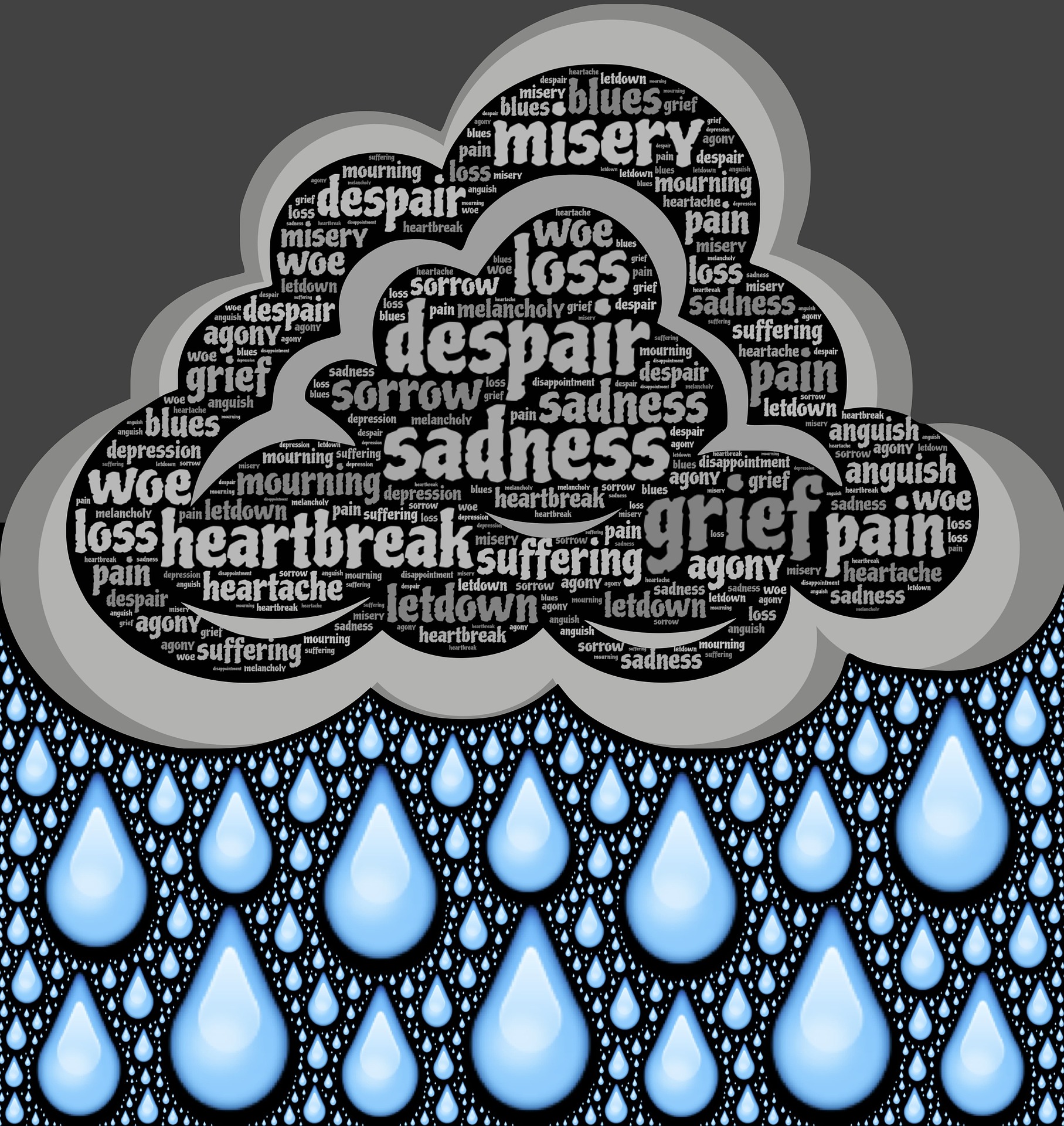Have you ever had your hot buttons pushed? If you’re a human being and experience emotions at all, you have with almost absolute certainty. Your heart starts pounding, your breathing shortens, adrenaline courses through your veins, you begin to sweat, you feel very strong emotions (usually fear or anger), you feel a strong compulsion to react instantaneously, and, in most cases, you either want to attack or run (that’s your fight-or-flight reaction kicking in!) from whatever or whomever caused your buttons to get pushed. Getting “lit up” (the expression I use to describe the feeling) and your reaction to having your hot buttons pushed is powerful, immediate, visceral, and very difficult to resist.
Just about all of us know what it feels like to get lit up, but what precisely are emotional hot buttons, where do they come from, and how do we stop them from ruining our lives?
What are Emotional Hot Buttons?
There are two key aspects of hot buttons. First, I see hot buttons as strong negative emotional reactions (e.g., irritation, frustration, anger, sadness, despair) to people or situations that touch an old psychological or emotional wound such as self-doubt, worry, insecurity, fear of failure or rejection, feeling out of control, needing to be perfect, and pressure of expectations. Because of this intense emotional connection between the present and the past, the reaction is usually out of proportion to the reality of the situation. That is, you react far too strongly to a person or experience that isn’t worthy of such a reaction.
Think of it this way. Rarely in our daily lives do we encounter a situation or person worthy of the kind of reaction that we experience when our hot buttons get pushed. So, why the excessive emotional reaction? Here’s how I have come to understand it. The current situation or person has some similarity to a past experience that was very painful. That resemblance triggers a replay of the upsetting past event that is existentially threatening to you, thus enflaming your emotional baggage related to the incident and catalyzing your survival instinct (your psychological, not your physical, life is threatened). Those hot emotions that are felt by that unconscious reenactment further trigger your fight-or-flight reaction to the perceived threat. That pain comes to the surface and expresses itself with strong negative emotions (usually fear or anger that align with whether you typically attack or flee in situations in which your emotional hot buttons get pushed).
At a neurological level, our hot buttons are governed by our amygdala which acts as a filter through which information about our world is processed and evaluated. The job of the amygdala is to identify any threats to our survival which produces our fight-or-flight reaction. Unfortunately, the amygdala doesn’t know the difference between a threat to our physical existence on the Serengeti 250,000 years ago and a perceived threat to our psychological existence in the 21st century.
Thankfully, we humans have a structure in our evolved brain called the pre-frontal cortex (PFC) that is involved with “executive functioning” which gives us the ability to weigh risks and rewards, recognize consequences, identify options, develop plans, and, ultimately, make conscious and deliberate choices about how we want to respond. As I’m sure has become clear, when you don’t react to being lit up and, instead, respond to an emotional situation with calm and intentionality, you are suppressing your amygdala activity and bringing your PFC activity to the fore to guide your thoughts, emotions, and behavior.
The volatile nature of our emotional hot buttons have real—and harmful—implications in our lives. Overall, they are highly self-destructive because the fight-or-flight reaction, which served us so well as primitive beings, is no longer constructive or healthy in the modern lives we lead. If our hot buttons get pushed frequently, they sabotage every aspect of our lives, from our feelings about ourselves to our school or work efforts to our relationships. And, when we get lit up, it just doesn’t feel good.
Disconnect Your Emotional Hot Buttons
Of course, the $64,000 question is: So how do I disconnect my hot buttons? As with so many aspects of our psychology, the process is simple, but not easy. Simple because you just decide to change, identify an alternative response to hot-button situations, and then make the change when you are confronted with one of those “get lit up” circumstances. Not easy because there are billions of years of evolution, powerful emotional baggage, and deeply ingrained psychological and emotional habits that compel you to keep doing what you’ve been doing for years.
I liken this process to forks in the road. In life, we are constantly faced with bad roads and good roads. In the case of today’s topic, the bad road is obviously when you react in unhealthy ways to your hot buttons getting pushed. The good road involves recognizing that the bad road is, well, bad and choosing to take the good road with some sort of psychological, emotional, or behavioral response that is constructive and appropriate for the reality of the current situation that would, in the past, light you up and cause you to react in ways that hurt you and others.
Here are the steps that you can take when you your hot buttons get pushed and how you can see and take the good road:
Make a commitment. Change starts with a commitment to change, so make a conscious commitment to yourself (and perhaps others) that you don’t like the bad road and are determined to take the good road.
Identify your patterns. It’s likely that you get lit up in the same situations and with the same people; in other words, there is a clear pattern of when your hot buttons get pushed. If you can identify those patterns, you can have your radar on for them and be able to see them coming or be prepared for them when they occur.
Gird your determination. As a way to gird your determination to resist the bad road, acknowledge how destructive and unhealthy your reactions are when you get lit up.
Create an alternative plan (specify the good road). In the moment when your hot buttons get pushed and you feel a powerful urge to react negatively, it is extremely difficult to be able to step back and think what a reasonable response to the present situation would be. Evolution, baggage, and habits will compel you to just react. So, when you’ve identified those common situations in which you get lit up, you can identify the good road, meaning how would you like to think, what emotions would you like to experience, and how you would like to respond when your hot buttons get pushed. Having this plan specified and at your disposal when the bad road presents itself to you enables your evolved brain to engage and allows you to make a conscious choice of how you want to respond more easily.
Have your radar on. This process will heighten your awareness of when your hot buttons are going to get pushed or actually get pushed. This mindfulness will enable you to recognize hot-button situations quickly, thus enabling you to activate your PFC and deactivate your amygdala immediately in response to getting lit up.
Stop and ask these questions:
- Why am I reacting this way?
- Does this situation deserve such a strong reaction?
- What is the underlying threat?
- Is there a healthier reaction to this situation?
Simply by stopping and asking these questions, you are triggering your PFC and giving it the opportunity to override your amygdala.
See the fork and take the good road. At this point, your PFC will be thoroughly alert and hopefully capable of resisting the forces motivating you to react based on your primitive instincts, emotional baggage, and unhealthy mental habits. Instead, with your plan already in place, you will be able to see that you have a choice in how to respond to having your buttons pushed and you can choose to take the good road. The great thing about the good road is that it is self-reinforcing; it feels good and your healthy response to the situation or person produces an equally positive response from your world.
Hope, faith, and patience. Learning to respond to your emotional hot buttons in a healthier way is not usually smooth or linear; rather, the journey can be filled with missed opportunities, failures, and setbacks. For example, at first, you may see the bad road ahead, but be unable to take the good road. Or you take the good road once, but then take the bad road the next time. If you struggle with making this change, it means you’re human and you’re not alone. You need three attitudes to get you through the rough patches. First, continued hope that you can make the change. Second, faith that your efforts will, in time, be rewarded. Third, patience so that you avoid getting frustrated and give yourself time to progressively move from the bad road to the good road.
Long-term, understand the underlying causes. Your ultimate goal is to disconnect your emotional hot buttons completely, so that you no longer react to formerly sensitive situations. This final step in your journey involves exploring the underlying causes of your hot buttons (with the help of a mental-health professional) and letting those causes go because they are no longer relevant to who you are now and the reality of the current situation.





